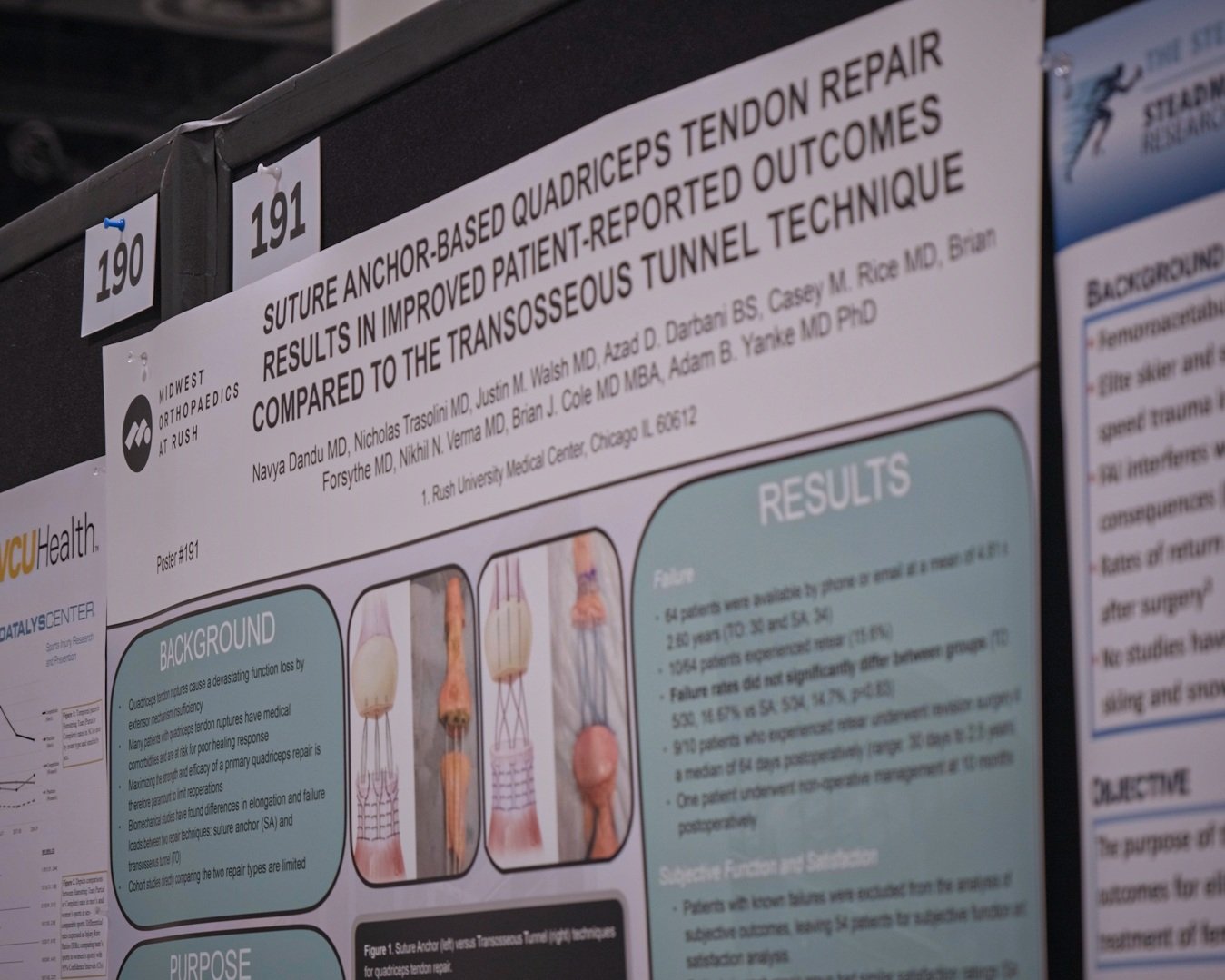
RESEARCH
Fellows participate in a diverse breadth of research projects ranging from basic science research (biomechanics, biomotion analysis, biological treatments, virtual reality, computer modeling) and clinical research with one of the most robust repository in sports medicine in the country. Involvement is highly encouraged as this is a significant aspect of the “Rush” experience. Research mentorship will aid in not only the successful completion of the projects but also lifelong collaboration with the department.
RESEARCH LABORATORY
The sports medicine research laboratory has the capacity to evaluate soft tissues properties including cartilage, tendon, meniscus and ligaments. Our laboratory mission is to improve the understanding, diagnosis and treatment of sports-related injuries through translational research studies which elucidate the biomechanical, morphologic and biologic properties of skeletal joints and associated soft connective tissues in their normal, injured, and healing states. From quantitative anatomy to descriptive soft tissue biomechanics (assessment of joint kinematics/pressures and compression/tensile material testing), contact and pressure sensors, to 3D printing, this constitutes a comprehensive laboratory for musculoskeletal research. Available technology within the lab includes: An MTS Insight 5 electromechanical testing system, a SpicaTek digital video imaging system for optical strain measurement; utilized in conjunction with MTS machine, Biaxial (linear and torque) hydraulic materials testing machine (Instron 8874) and a four-camera infrared motion tracking system (Motion Analysis Corp.) for 3D kinematic measurements; utilized in conjunction with Instron machine, Microscribe MX portable 3D coordinate measuring machine (Immersion Corp.) Laser displacement sensor (Keyence Corp.) and a NextEngine 2020i high-resolution laser scanner.
RESEARCH WORK
MOTION ANALYSIS LABS
-
We prioritize optimal protocols for diagnosis and treatment evaluation. To this, the development of finite element analysis models of the PF joint and cartilage strain mapping has been successfully performed.
-
Computer simulation looking at ligament length changes and surface topography matching for cartilage transplants all with custom written software has been used to better understand isometric properties of different structures.
MUSCULOSKELETAL IMAGING
-
Optoelectronic cameras, force plates, wearable sensors, dynamometers, wireless pressure detectors, motion monitors.
-
We quantify detailed movement of the feet, ankles, knees, and hips during functional tasks including walking on level or ramped surfaces, ascending or descending stairs, and other common daily activities. And we also assess upper extremity and full body motion for dynamic activities such as sports.
SECTION OF MOLECULAR MEDICINE
-
The Section of Molecular Medicine in the Department of Orthopedic Surgery applies biochemistry, cell biology, basic molecular biology, signal transduction and immunology to various problems in orthopedics.
-
Distinctive highlights are biological treatment characterization, cartilage and tendon metabolism, genome mapping of disease-promoting genes, characterization of molecules provoking immune attacks in joints, and epigenetic factors involved in the regulatory network of inflammatory processes in joints.






